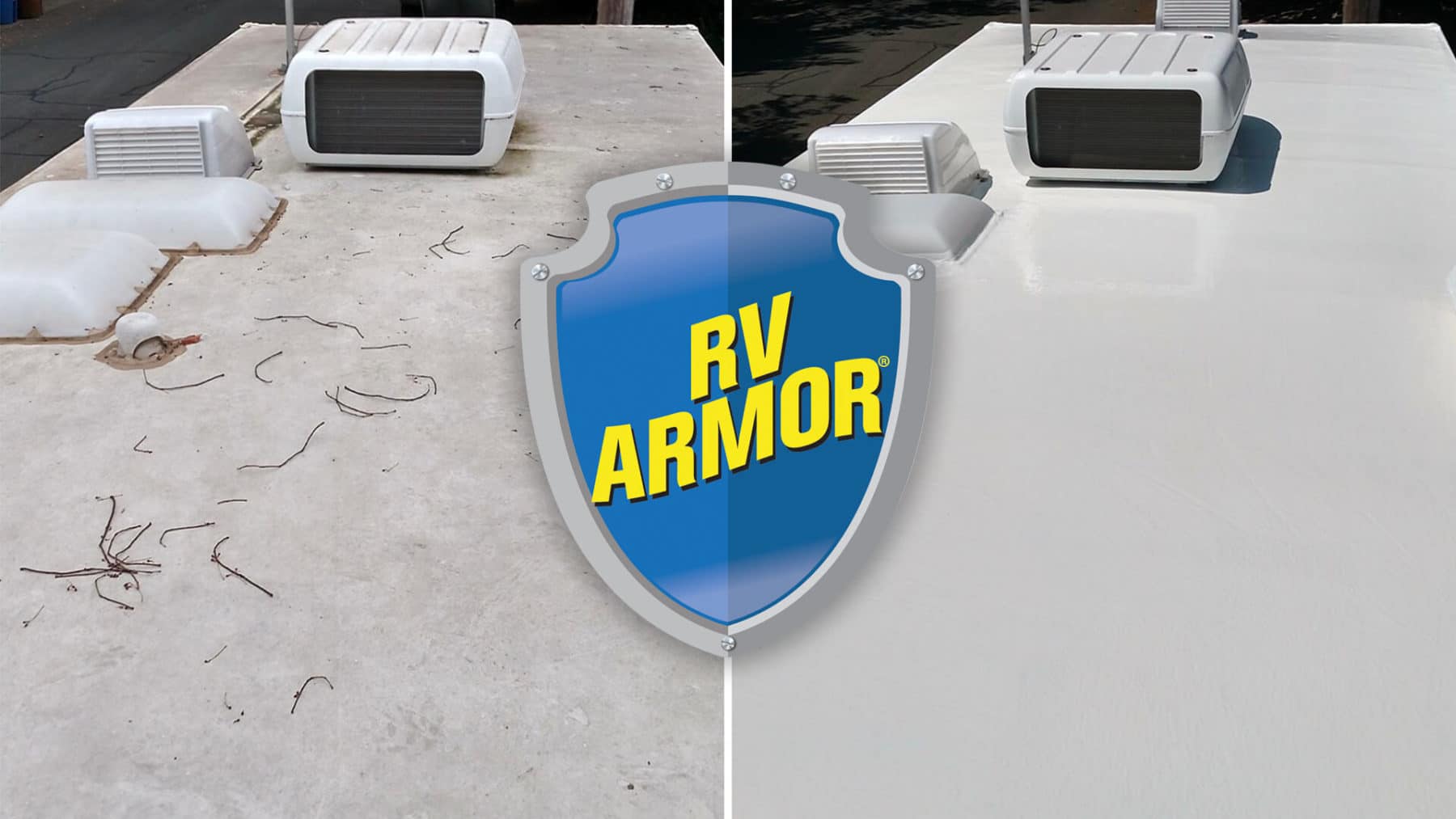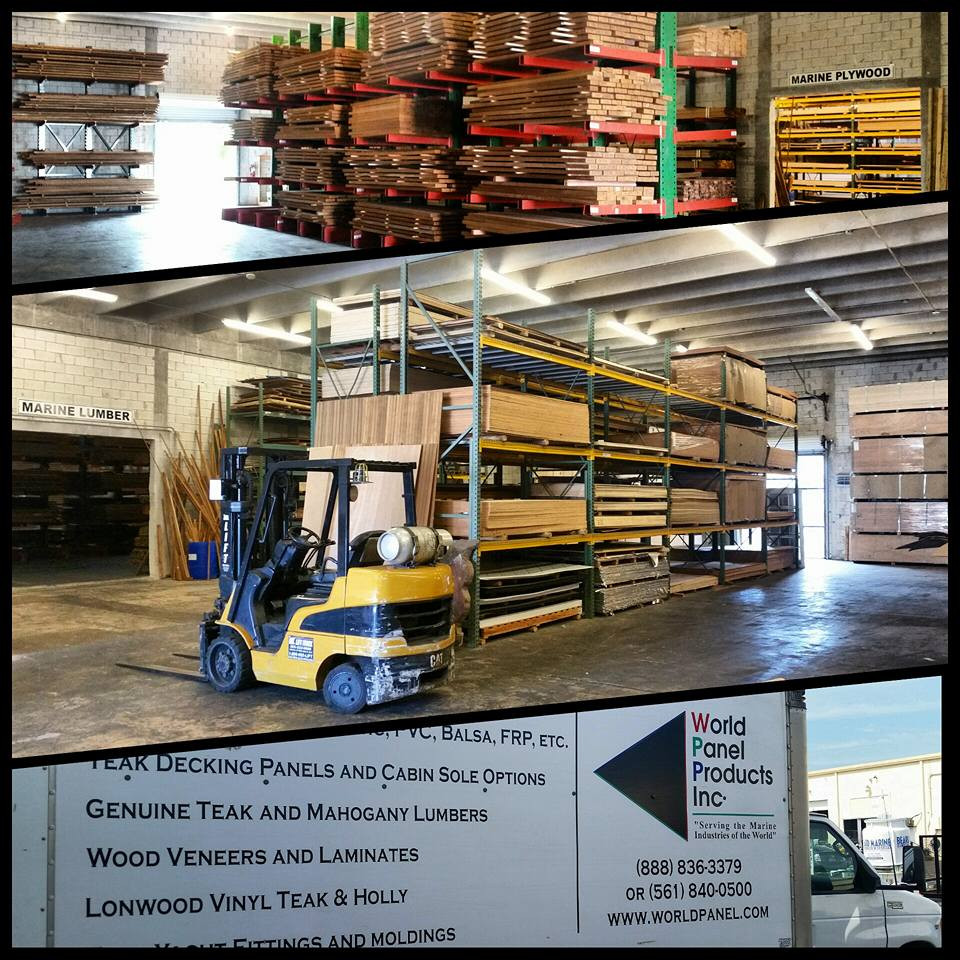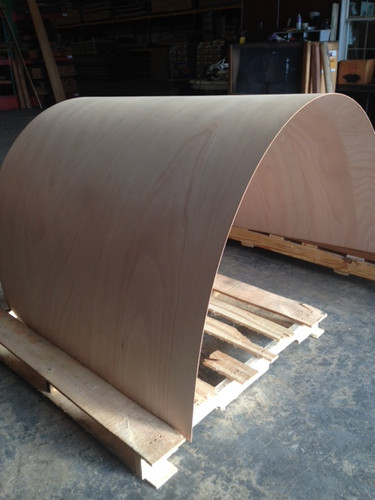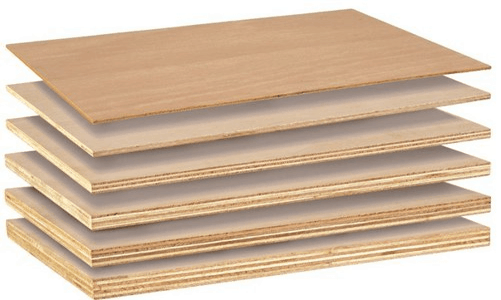It's been 14 months, but it appears this nightmare is finally ending.
We got the salvage title from the insurance company. I filled out all the paperwork and drove it 90 miles to Palmetto, Fl, not trusting the mail, and hand-delivered it to the Department of Highway Safety and Motor Vehicles. The supervisor reviewed it, said it was filled out perfectly, and made an appointment for this coming Tuesday for me to drive the coach to them for inspection. He already stated that he knows it will be a waste of his time because the coach has always been roadworthy.
The RV Flex Armor was installed and they did a reasonably clean job of it. They had to replace three sheets of luan before spraying it on. Apparently, there was a lot of water in the styrofoam because I'm still getting the small flakes dropping out of the a/c vents when I'm cooling the coach. I assume that is due to the foam getting wet and then drying out.
The ceiling fabric is stained from the luan getting wet more than we thought. We couldn't extend the main living room slideout due to the hydraulic cylinder blowing, so we couldn't see the stain all the way down the side of the roof the entire length of the slideout. We are going to attempt to remove the stains with a 50/50 solution of bleach water. We will cover every square inch of the coach below where we spray. If that doesn't get rid of the stain, I'll live with it. The luan over the shower around the skylight needs to be replaced, and we will get to that after our upcoming trip to the Midwest.
Since I have read that when one hydraulic cylinder blows out, the rest will usually follow suit, I had my coach mechanic rebuild all six for the front two slideouts. He also found my electrical problem was the hitch plug shorting out, the gas portion of the water heater stopped working due to the control board going bad, and he found my 12v DC dash plug didn't work because of a bad connection. The steps stopped working because the pivot pin broke. I couldn't find anyone who would fabricate one, so I was forced to have LaMesa RV in Fort Myers order new steps. The old ones were in bad shape anyway, and we had been babying them with a lot of white lithium grease, so it didn't bother me to have to replace them. What did bother me was the charge - more than $2,000 for a set of steps installed.
While driving the coach home from the shop, the ABS light came on and the left rear brake seized. I had to have the coach towed back to the shop, where they could not replicate the problem. That is worrisome, but they flushed the fluid completely, tore down the caliper from that wheel, found nothing wrong, and put everything back together. One of the four pistons on the caliper was a little sticky and slow to respond until they cleaned and actuated it, and they think that may have been the problem. The system now has new brake fluid.
Since I reinjured my back, I hired a man to wash, wax, and buff the coach. It was expensive since nothing had been done to the body for over a year, but he got it looking very good.
By the time I pay the sales tax and registration fees for the new license plate after the coach has been inspected, I will have put in almost as much as the insurance company gave me above the repurchase price of the coach. I'll still be ahead though since my loan is now paid off. We will take the coach for a drive to the Midwest and hope nothing else is wrong with it after sitting in a shop for nearly a year. New house batteries had to be purchased this week since the coach mechanic who stored it for me didn't exercise the generator as often as I would have liked. But it now appears to be the end of this long road. Maybe it will be smooth sailing for a little while.

 rv-armor.com
rv-armor.com

rv-armor.com

 www.worldpanel.com
www.worldpanel.com

 www.worldpanel.com
www.worldpanel.com

 www.worldpanel.com
www.worldpanel.com

 www.boatbuildercentral.com
www.boatbuildercentral.com

 www.boatbuildercentral.com
www.boatbuildercentral.com
